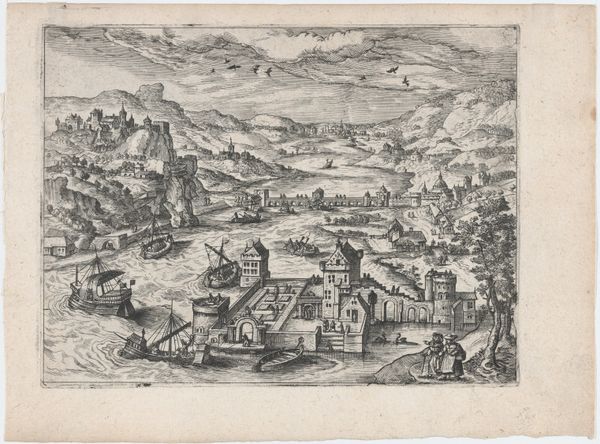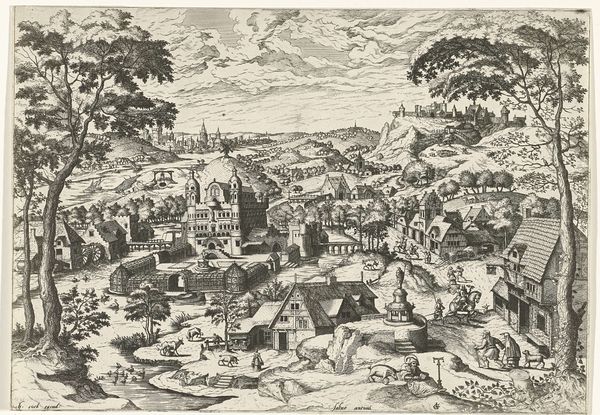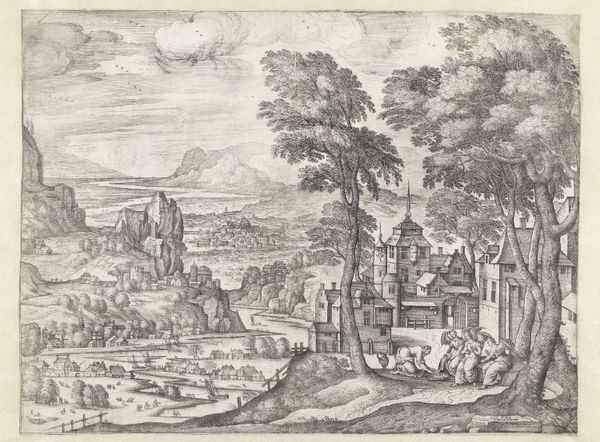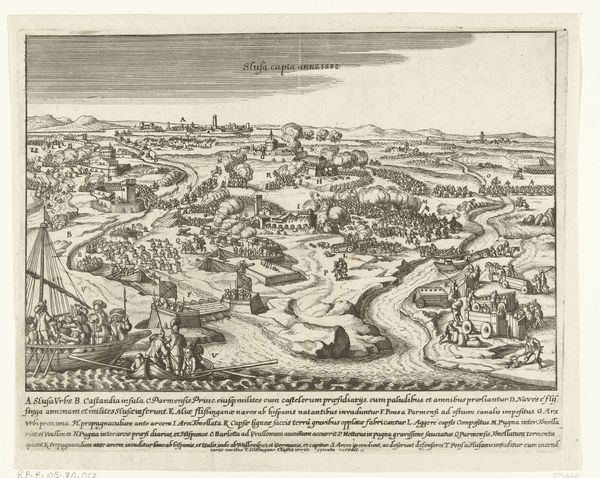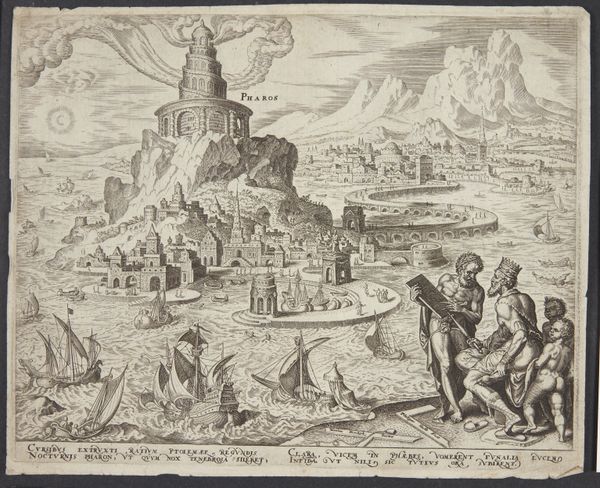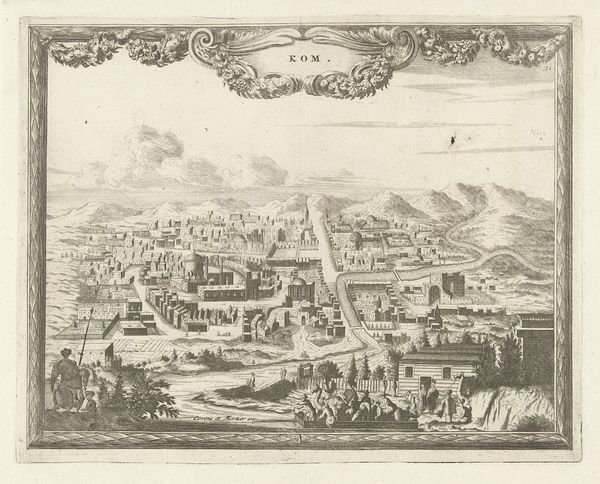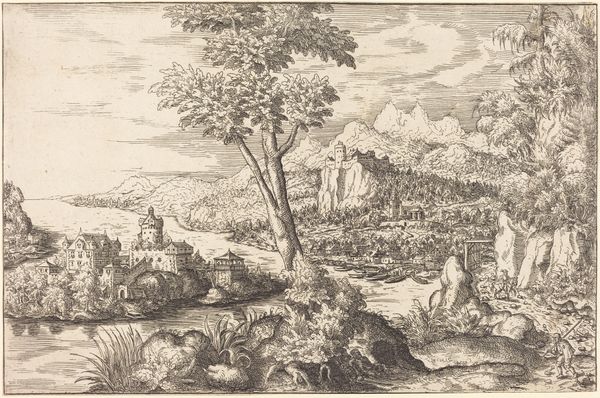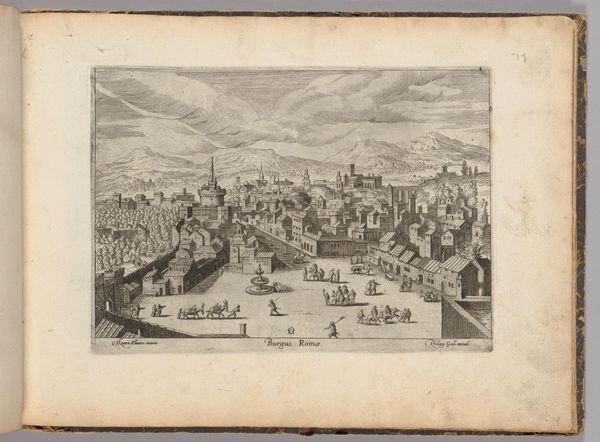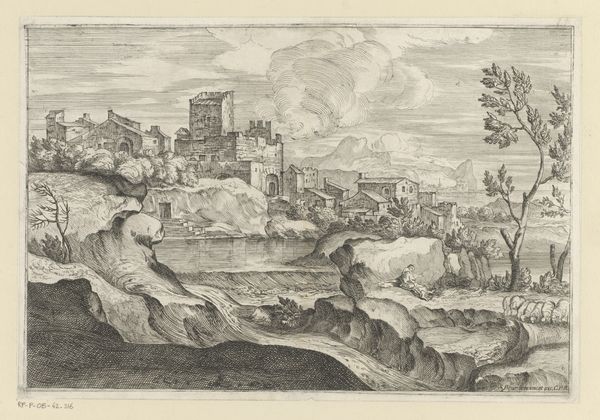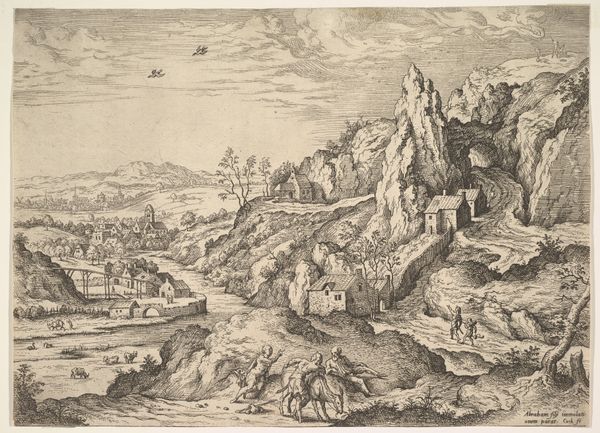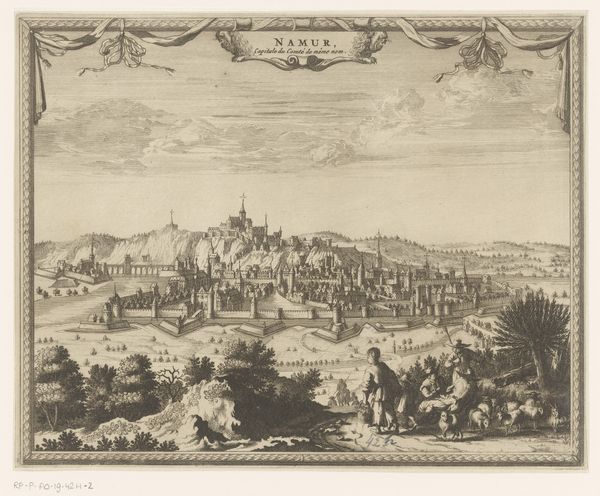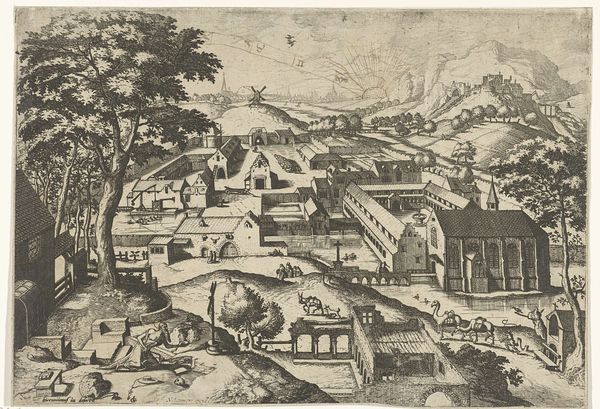
print, engraving
#
pen drawing
# print
#
landscape
#
cityscape
#
northern-renaissance
#
engraving
Dimensions: height 155 mm, width 205 mm
Copyright: Rijks Museum: Open Domain
Editor: This is "Rivierlandschap met waterburcht," a river landscape with a water castle, made by Joannes van Doetechum, sometime after 1570. It's a print - an engraving, actually - currently held at the Rijksmuseum. The density of detail is remarkable, really demanding close inspection. How would you interpret this print? Curator: I find myself drawn to the physical process and materials. This isn't a painting relying on illusionism; it’s an engraving. The lines are etched, demanding a specific skill and labor. The image wasn’t just ‘conceived,’ it was meticulously produced. Consider the economic context: How does the act of creating multiples democratize images, influencing taste and accessibility to information in the 16th century? Editor: So you're focusing less on what it represents, like the river or the castle, and more on how it was made and its role in society? Curator: Precisely! And notice *how* the lines define not just form but texture, the very substance of clouds, stone, and water. Look closely. Are these lines just representations, or do they, in their accumulation, become their own material reality, almost tactile in their density? What kind of tools and workshops were needed to create such a detailed image? Editor: That makes me see the print in a completely different light. I hadn't really considered the labor that went into it, or how being a print changed how it was received. Curator: It shifts the conversation from singular genius to a network of production. Consider the quality of paper, the ink. These elements are as important as the "scene" depicted. Think of how trade routes might have enabled access to these materials! Editor: I'm now looking at this image through the lens of production and consumption, instead of just admiring the landscape. Curator: Exactly! This engraving becomes more than just an image. It transforms into an object loaded with socio-economic implications. Understanding the materiality opens doors to deeper interpretations.
Comments
No comments
Be the first to comment and join the conversation on the ultimate creative platform.
